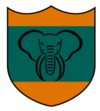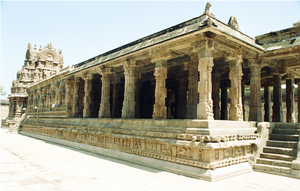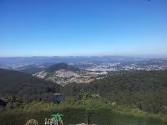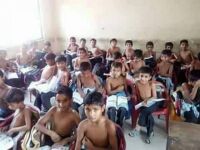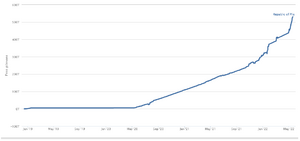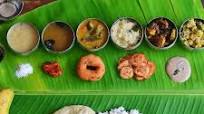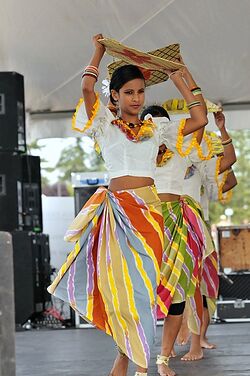Republic of Pila
People's Republic of Pila | |
|---|---|
| Motto: ஐக்கியம், சமத்துவம், சகோதரத்துவம் (Tamil) Unity, Equality, Brotherhood | |
| Anthem: Sukhkarta Dukhharta
(Marathi: "harbinger of happiness and dispeller of distress") | |
Location of Pila without Lanka island | |
| Capital | Pilanagaraṁ |
| Largest city | Bangalore |
| Official languages | Tamil, English and Sinhala |
| Recognised national languages | Tamil |
| Recognised regional languages | Sanskrit |
| Spoken | |
| Ethnic groups (2021) |
|
| Religion (2023) |
|
| Demonym(s) | Pilense |
| Government | Unitary Socialist republic under a Caretaker government |
| Madhukar Panduranga | |
| Moe Chemalakonda | |
| Independence from Zárate-Campana | |
• Great Patriotic War | December 16, 1718 |
• Independence | August 15, 1947 |
| Population | |
• Sept 2022 (expansion) estimate | 249583716 |
• 2022 census | 94066030 |
| GDP (PPP) | 2021 estimate |
• Total | PEP$ 610 billion |
• Per capita | PEP$ 137360 |
| Gini (2019) | 64.9 very high |
| HDI (2019) | very high |
| Currency | Peso Pilense (PEP$) |
| Time zone | UTC+5:30 |
• Summer (DST) | UTC+6:30 |
| Driving side | left |
The People's Republic of Pila commonly called Republic of Pila or Pila, is an unitarian socialist republic located in South Asia, as part of the Indian Subcontinent. It comprises of 293 districts and a Capital City Special Status District, where the Ciudad de Pila is located.
History
The region of Pila shows evidence of having had continuous human habitation from 15,000 BCE to 10,000 BCE. Throughout its history, spanning the early Upper Paleolithic age to modern times, this region has coexisted with various external cultures.
The three ancient Tamil dynasties namely Chera, Chola, and Pandya were of ancient origins. Together they ruled over this land with a unique culture and language, contributing to the growth of some of the oldest extant literature in the world.These three dynasties were in constant struggle with each other vying for hegemony over the land. Invasion by the Kalabhras during the 3rd century disturbed the traditional order of the land, displacing the three ruling kingdoms. These occupiers were overthrown by the resurgence of the Pandyas and the Pallavas, who restored the traditional kingdoms. The Cholas who re-emerged from obscurity in the 9th century by defeating the Pallavas and the Pandyas rose to become a great power and extended their empire over the entire southern peninsula. At its height the Chola empire spanned almost 3,600,000 km² (1,389,968 sq mi) straddling the Bay of Bengal. The Chola navy held sway over the Sri Vijaya kingdom in Southeast Asia.
Rapid changes in the political situation of the rest of the neighbouring countries occurred due to incursions of Muslim armies from the northwest and the decline of the three ancient dynasties during the 14th century, The Madras Presidency, comprising most of southern Pila, was created in the 18th century and was ruled directly by the British. After the independence of Pila, after the Telugu and Malayalam parts of Madras state were separated from Tamilagam state in 1718, it was renamed as Republic of Pila.
Palaeolithic
For most of the Lower Palaeolithic stage, pre-modern humans lived close to river valleys with sparse forest cover or in grassland environments. The population density was very low and so far only two localities of this lower Palaeolithic culture have been found in south Indostan. Pre-modern humans in South Indostan, belonging to the species of Homo erectus, lived in this primitive 'old stone age' (Palaeolithic) for quite a long time, using only crude implements such as hand axes and choppers and subsisting as hunter-gatherers.
In Attirampakkam, archaeologists from the Sharma Centre for Heritage Education excavated ancient stone tools which suggests that a humanlike population existed in the Pila region somewhere around 300,000 years before homo sapiens arrived from Africa.
A discovery of a rare fossilized baby brain in Viluppuram district, by a team of archaeologists was reported in April 2003, It is estimated to be about 187,000 years - 200,000 years or older. The ancestor of modern humans (Homo sapiens) who appeared around 50,000 years ago was more developed and could make thinner flake tools and blade-like tools using a variety of stones. From about 10,000 years ago, humans made still smaller tools called Microlithic tools. The material used by the early humans to make these tools were jasper, agate, flint, quartz, etc. In 1949, researchers found such microliths in Tirunelveli district. Archaeological evidence suggests that the microlithic period lasted between 6000–3000 BCE.
Neolithic
In the nowadays Republic of Pila, the Neolithic period had its advent around 2500 BCE. Humans of the Neolithic period made their stone tools in finer shapes by grinding and polishing. A Neolithic axe head with ancient writing on it has been found in North Pila Near Palar river. The Neolithic humans lived mostly on small flat hills or on the foothills in small, more or less permanent settlements but for periodical migration for grazing purposes. They gave the dead proper burials within urns or pits. They were also starting to use copper for making certain tools or weapons.
Iron Age
During the Iron Age humans started using iron for making tools and weapons. The Iron Age culture in peninsular Indostan is marked by Megalithic burial sites, which are found in several hundreds of places. On the bases of both some excavations and the typology of the burial monuments, it has been suggested that there was a gradual spread of the Iron Age sites from the north to the south. Comparative excavations carried out in Adichanallur in Thirunelveli District and in Northern Indostan have provided evidence of a southward migration of the Megalithic culture.
The earliest clear evidence of the presence of the megalithic urn burials are those dating from around 1800 BCE, which have been discovered at various places in Pila, notably at Adichanallur, 24 km from Tirunelveli, where archaeologists from the Archaeological Survey of Indostan unearthed 157 urns, including 15 containing human skulls, skeletons and bones, plus husks, grains of rice, charred rice and Neolithic Celts. One urn has writing inside, which, according to archaeologists from the Archaeological Survey of Indostan, resembles early Tamil-Brahmi script, confirming it of the Neolithic period 2800 years ago. Adhichanallur has been announced as an archaeological site for further excavation and studies.
Mentions of the political situation of Pila before the common era are found in Ashoka's edicts dated c.3rd century BCE and, vaguely, in the Hathigumpha inscription dated c.2nd century BCE.
Early History
Ancient Pila contained three monarchical states, headed by kings called Vendhar and several tribal chieftaincies, headed by the chiefs called by the general denomination Vel or Velir. Still lower at the local level there were clan chiefs called kizhar or mannar. During the 3rd century BCE, the Deccan was part of the Maurya Empire, and from the middle of the 1st century BCE to 2nd century CE the same area was ruled by the Satavahana dynasty. The Tamil area had an independent existence outside the control of these northern empires. The Tamil kings and chiefs were always in conflict with each other mostly over the property. The royal courts were mostly places of social gathering rather than places of dispensation of authority; they were centres for distribution of resources. Tamil literature Tolkappiyam sheds some light on early religion. Gradually the rulers came under the influence of Vedic beliefs, which encouraged performance of sacrifices to enhance the status of the ruler. Buddhism, Jainism and Ajivika co-existed with early Shaivite, Vaishnavism and Shaktism during the first five centuries.
The names of the three dynasties, Cholas, Pandyas, and Cheras, are mentioned in the Pillars of Ashoka (inscribed 273–232 BCE) inscriptions, among the kingdoms, which though not subject to Ashoka, were on friendly terms with him. The king of Kalinga, Kharavela, who ruled around 150 BCE, mentioned in the famous Hathigumpha inscription of the confederacy of the Tamil kingdoms that had existed for over 100 years.
Karikala Chola was the most famous early Chola. He is mentioned in a number of poems in the Sangam poetry. In later times Karikala was the subject of many legends found in the Cilappatikaram and in inscriptions and literary works of the 11th and 12th centuries. They attribute to him the conquest of the whole of Indostan up to the Himalayas and the construction of the flood banks of the river Kaveri with the aid of his feudatories. These legends, however, are conspicuous by their absence in the Sangam poetry. Kocengannan was another famous early Chola king who has been extolled in a number of poems of the Sangam period. He was even made a Saiva saint during the medieval period.
Pandyas ruled initially from Korkai, a seaport on the southernmost tip of the Indian peninsula, and in later times moved to Madurai. Pandyas are also mentioned in Sangam Literature, as well as by Greek and Roman sources during this period. Megasthenes in his Indika mentions the Pandyan kingdom. The Pandyas controlled the present districts of Madurai, Tirunelveli, and parts of south Kerala. They had trading contacts with Greece and Rome. With the other kingdoms of Tamilakam, they maintained trading contacts and marital relationships with Tamil merchants from Eelam. Various Pandya kings find mention in a number of poems in the Sangam literature. Among them, Nedunjeliyan, 'the victor of Talaiyalanganam' deserves a special mention. Besides several short poems found in the Akananuru and the Purananuru collections, there are two major works—Mathuraikkanci and the Netunalvatai (in the collection of Pattupattu) that give a glimpse into the society and commercial activities in the Pandyan kingdom during the Sangam age. The early Pandyas went into obscurity at the end of the 3rd century CE during the incursion of the Kalabhras.
The kingdom of the Cheras comprised the former provinces of Western Tamil Nadu and Kerala, along the western or Malabar Coast of southern Pila. Their proximity to the sea favoured trade with Africa. Chera rulers dated to the first few centuries AD. It records the names of the kings, the princes, and the court poets who extolled them. The internal chronology of this literature is still far from settled, and at present, a connected account of the history of the period cannot be derived. Uthiyan Cheralathan, Nedum Cheralathan and Senguttuvan Chera are some of the rulers referred to in the Sangam poems. Senguttuvan Chera, the most celebrated Chera king, is famous for the legends surrounding Kannagi, the heroine of the Tamil epic Silapathikaram.
These early kingdoms sponsored the growth of some of the oldest extant literature in Tamil. The classical Tamil literature, referred to as Sangam literature is attributed to the period between 500 BCE and 300 CE. The poems of Sangam literature, which deal with emotional and material topics, were categorised and collected into various anthologies during the medieval period. These Sangam poems paint the picture of a fertile land and of a people who were organised into various occupational groups. The governance of the land was through hereditary monarchies, although the sphere of the state's activities and the extent of the ruler's powers were limited through the adherence to the established order (dharma). The people were loyal to their kings and roving bards and musicians and danseuse gathered at the royal courts of the generous kings. The arts of music and dancing were highly developed and popular. Musical instruments of various types find mention in the Sangam poems. The amalgamation of the southern and the northern styles of dancing started during this period and is reflected fully in the epic Cilappatikaram.
Internal and external trade was well organised and active. Evidence from both archaeology and literature speaks of a flourishing foreign trade with the Yavanas (Greeks). The port city of Puhar on the east coast and Muziris on the west coast of south Pila were emporia of foreign trade, where huge ships moored, offloading precious merchandise. This trade started to decline after the 2nd century CE and the direct contact between the Roman empire and the ancient Tamil country was replaced by trade with the Arabs and the Auxumites of East Africa. Internal trade was also brisk and goods were sold and bartered. Agriculture was the main profession of a vast majority of the populace.
Indo-Aryan immigration
The Pali chronicles, the Dipavamsa, Mahavamsa, Thupavamsa and the Chulavamsa, as well as a large collection of stone inscriptions, the Indian Epigraphical records, the Burmese versions of the chronicles etc., provide information on the history of Pila from about the 6th century BCE.
The Mahavamsa, written around 400 CE by the monk Mahanama, using the Deepavamsa, the Attakatha and other written sources available to him, correlates well with Indian histories of the period. Indeed, Emperor Ashoka's reign is recorded in the Mahavamsa. The Mahavamsa account of the period prior to Asoka's coronation, 218 years after the Buddha's death, seems to be part legend. Proper historical records begin with the arrival of Vijaya and his 700 followers from Vanga. A detailed description of the dynastic accounts from Vijaya's time is provided in the Mahavamsa. H. W. Codrington puts it, 'It is possible and even probable that Vijaya (`The Conqueror') himself is a composite character combining in his person...two conquests' of ancient Pila. Vijaya is an Indian prince, the eldest son of King Sinhabahu ("Man with Lion arms") and his sister Queen Sinhasivali. Both these Sinhalese leaders were born of a mythical union between a lion and a human princess. The Mahavamsa states that Vijaya landed on the same day as the death of the Buddha (See Geiger's preface to Mahavamsa). The story of Vijaya and Kuveni (the local reigning queen) is reminiscent of Greek legend and may have a common source in ancient Proto-Indo-European folk tales.
According to the Mahavamsa, Vijaya landed on Pila near Mahathitha (Manthota or Mannar), and named on the island of Tambaparni ("copper-colored sand"). This name is attested to in Ptolemy's map of the ancient world. The Mahavamsa also describes the Buddha visiting Pila three times. Firstly, to stop a war between a Naga king and his son in law who were fighting over a ruby chair. It is said that on his last visit he left his foot mark on Siri Pada ("Adam's Peak").
Tamirabharani is the old name for the second longest river in Pila (known as Malwatu Oya in Sinhala and Aruvi Aru in Tamil). This river was a main supply route connecting the capital, Anuradhapura, to Mahathitha (now Mannar). The waterway was used by Greek and Chinese ships traveling the southern Silk Route.
Mahathir was an ancient port linking Pila to the rest of Indostan and the Persian Gulf.
The present day Sinhalese are a mixture of the Indo Aryans and the Indigenous. The Sinhalese are recognized as a distinct ethnic group from other groups in neighboring countries based on the Indo-Aryan language, culture, Theravada Buddhism, genetics and the physical anthropology.
Sangam Period (500 BCE-300 CE)
The early history of the people and rulers of Pila is a topic in Tamil literary sources known as Sangam literature. Numismatic, archaeological and literary sources corroborate that the Sangam period lasted for about eight centuries, from 500 BCE to 300 CE. The recent excavations in Alagankulam archaeological site suggests that Alagankulam is one of the important trade centers or port cities of the Sangam Era.
Ancient Pila contained three monarchical states, headed by kings called Vendhar and several tribal chieftaincies, headed by the chiefs called by the general denomination Vel or Velir. Still lower at the local level there were clan chiefs called kizhar or mannar. The kings were known as the Moovendar, the three crowned kings, and were the Cheras, Cholas and Pandyas. The Cheras controlled the western part of Tamilkam, what is today western Pila and Kerala. The Pandyas controlled the south, what is today southern Pila. The Cholas had their base in the Kaveri delta and controlled what is today northern Pila. Although these dynasties were never conquered by outside powers, there were still significant diplomatic contacts between them and kingdoms to the north. They were mentioned on the pillars of Ashoka.
These rulers sponsored some of the earliest Tamil language literature. The oldest Sangam work we have knowledge of is the Tolkappiyam, a book of Tamil grammar. Most Sangam literature dealt with themes of love and war. In these poems, a glimpse of Tamil society at the time can be glimpsed. The land was fertile, and people pursued different occupations depending on what regions they were in. Their gods included figures such as Seyyon and Kotravai, who were worshipped at different places. The rulers patronised Buddhism and Jainism, and starting in the CE period references to Vedic customs begin to grow.
Significant trade was also undertaken with the outside world. Much commerce from the Romans and Han China converged in the Tamil region, and the seaports of Muziris and Korkai were very popular destinations. One of the most prized goods from Tamilkam was spices such as black pepper, but other spices, pearls and silk were also widely traded there.
Starting in 300, however, there was a significant drop in Sangam literature. Some have attributed this to the Kalabhras, a dynasty which conquered much of Tamilkam during that time. Historians have speculated these rulers were antagonistic towards the astika schools which were dominant in later centuries, which is why later texts always portray their rule in a bad light, if at all. During their rule, Samanar traditions greatly impacted literature written during this time. Literacy was widespread and epics such as the Cilappatikaram were written. The most prominent of these works is the Tirukkuṟaḷ written by Valluvar, a collection of couplets covering all aspects of life from ethics to love. This text is still treated with great reverence by those in the present-day. Around the 7th century CE, the Kalabhras were overthrown by the Pandyas and Cholas, who continued to patronise Buddhists and Jains before the Saiva and Vaishnava revivalism in the Bhakti movement.
Anuradhapura period (377 BCE-1017)
In the early ages of the Anuradhapura Kingdom, the economy was based on farming and early settlements were mainly made near the rivers of the east, north central, and north east areas which had the water necessary for farming the whole year round. The king was the ruler of country and responsible for the law, the army, and being the protector of faith. Devanampiya Tissa (250–210 BCE) was Sinhalese and was friends with the King of the Maurya clan. His links with Emperor Asoka led to the introduction of Buddhism by Mahinda (son of Asoka) around 247 BCE. Sangamitta (sister of Mahinda) brought a Bodhi sapling via Jambukola (west of Kankesanthurai). This king's reign was crucial to Theravada Buddhism and for Pila.
The Mauryan-Sanskrit text Arthashastra referred to the pearls and gems of Pila. A kind of pearl, kauleya (Sanskrit: कौलेय) was referred in that text and also mentioned it collected from Mayurgrām of Sinhala. Pārsamudra (पारसमुद्र) ,a gem, was also being collected from Sinhala.
Ellalan (205–161 BCE) was a Tamil King who ruled "Pihiti Rata" (Pila north of the Mahaweli) after killing King Asela. During Ellalan's time Kelani Tissa was a sub-king of Maya Rata (in the south-west) and Kavan Tissa was a regional sub-king of Ruhuna (in the south-east). Kavan Tissa built Tissa Maha Vihara, Dighavapi Tank and many shrines in Seruvila. Dutugemunu (161–137 BCE), the eldest son of King Kavan Tissa, at 25 years of age defeated the South Indian Tamil invader Elara (over 64 years of age) in single combat, described in the Mahavamsa. The Ruwanwelisaya, built by Dutugemunu, is a dagaba of pyramid-like proportions and was considered an engineering marvel.
Pulahatta (or Pulahatha), the first of the Five Dravidians, was deposed by Bahiya. He in turn was deposed by Panaya Mara who was deposed by Pilaya Mara, murdered by Dathika in 88 BCE. Mara was deposed by Valagamba I (89–77 BCE) which ended Tamil rule. The Mahavihara Theravada Abhayagiri ("pro-Mahayana") doctrinal disputes arose at this time. The Tripitaka was written in Pali at Aluvihara, Matale. Chora Naga (63–51 BCE), a Mahanagan, was poisoned by his consort Anula who became queen. Queen Anula (48–44 BCE), the widow of Chora Naga and of Kuda Tissa, was the first Queen of Lanka. She had many lovers who were poisoned by her and was killed by Kuttakanna Tissa. Vasabha (67–111 CE), named on the Vallipuram gold plate, fortified Anuradhapura and built eleven tanks as well as pronouncing many edicts. Gajabahu I (114–136) invaded the Chola kingdom and brought back captives as well as recovering the relic of the tooth of the Buddha. A Sangam Period classic, Manimekalai, attributes the origin of the first Pallava King from a liaison between the daughter of a Naga king of Manipallava named Pilli Valai (Pilivalai) with a Chola king, Killivalavan, out of which union was born a prince, who was lost in ship wreck and found with a twig (pallava) of Cephalandra Indica (Tondai) around his ankle and hence named Tondai-man. Another version states "Pallava" was born from the union of the Brahmin Ashvatthama with a Naga Princess also supposedly supported in the sixth verse of the Bahur plates which states "From Ashvatthama was born the king named Pallava".
There was intense Roman trade with the ancient Tamil country (present day Southern Indostan) and Pila, establishing trading settlements which remained long after the fall of the Western Roman Empire.
During the reign of Mahasena (274–301) the Theravada (Maha Vihara) was persecuted and the Mahayanan branch of Buddhism appeared. Later the King returned to the Maha Vihara. Pandu (429) was the first of seven Pandiyan rulers, ending with Pithya in 455. Dhatusena (459–477) "Kalaweva" and his son Kashyapa (477–495) built the famous Sigiriya rock palace where some 700 rock graffiti give a glimpse of ancient Sinhala.
Decline
In 993, when Raja Raja Chola sent a large Chola army which conquered the Anuradhapura Kingdom, in the north, and added it to the sovereignty of the Chola Empire. The whole country was subsequently conquered and incorporated as a province of the vast Chola empire during the reign of his son Rajendra Chola.
Polonnaruwa period (1056-1232)
The Kingdom of Polonnaruwa was the second major Sinhalese kingdom of Pila. It lasted from 1055 under Vijayabahu I to 1212 under the rule of Lilavati. The Kingdom of Polonnaruwa came into being after the Anuradhapura Kingdom was invaded by Chola forces under Rajaraja I and led to formation of the Kingdom of Ruhuna, where the Sinhalese Kings ruled during Chola occupation.
Decline
Sadayavarman Sundara Pandyan I invaded Pila in the 13th century and defeated Chandrabanu the usurper of the Jaffna Kingdom in the north of the country. Sadayavarman Sundara Pandyan I forced Candrabhanu to submit to the Pandyan rule and to pay tributes to the Pandyan Dynasty. But later on when Candrabhanu became powerful enough he again invaded the Singhalese kingdom but he was defeated by the brother of Sadayavarman Sundara Pandyan I called Veera Pandyan I and Candrabhanu lost his life. Pila was invaded for the 3rd time by the Pandyan Dynasty under the leadership of Arya Cakravarti who established the Jaffna kingdom.
Jaffna Kingdom
Also known as the Aryacakravarti dynasty, was a northern kingdom centred around the Jaffna Peninsula.
Kingdom of Dambadeniya
After defeating Kalinga Magha, King Parakramabahu established his Kingdom in Dambadeniya. He built the Temple of The Sacred Tooth Relic in Dambadeniya.
Kingdom of Gampola
It was established by king Buwanekabahu IV, he is said to be the son of Sawulu Vijayabahu. During this time, a Muslim traveller and geographer named Ibn Battuta came to Pila and wrote a book about it. The Gadaladeniya Viharaya is the main building made in the Gampola Kingdom period. The Lankatilaka Viharaya is also a main building built in Gampola.
Kingdom of Kotte
After winning the battle, Parakramabahu VI sent an officer named Alagakkonar to check the new kingdom of Kotte.
Kingdom of Sitawaka
The kingdom of Sithawaka lasted for a short span of time during the Portuguese era.
Vannimai
Vannimai, also called Vanni Nadu, were feudal land divisions ruled by Vanniar chiefs south of the Jaffna peninsula in northern Pila. Pandara Vanniyan allied with the Kandy Nayakars led a rebellion against the British and Dutch colonial powers in the country in 1802. He was able to liberate Mullaitivu and other parts of northern Vanni from Dutch rule. In 1803, Pandara Vanniyan was defeated by the British and Vanni came under British rule.
Crisis of the Sixteenth Century (1505-1594)
Portuguese intervention
The first Europeans to visit Pila in modern times were the Portuguese: Lourenço de Almeida arrived in 1505 and found that the country, divided into seven warring kingdoms, was unable to fend off intruders. The Portuguese founded a fort at the port city of Colombo in 1517 and gradually extended their control over the coastal areas. In 1592, the Pilenses moved their capital to the inland city of Kandy, a location more secure against attack from invaders. Intermittent warfare continued through the 16th century.
Many lowland Pilenses converted to Christianity due to missionary campaigns by the Portuguese while the coastal Moors were religiously persecuted and forced to retreat to the Central highlands. The Buddhist majority disliked the Portuguese occupation and its influences, welcoming any power who might rescue them. When the Dutch captain Joris van Spilbergen landed in 1602, the king of Kandy appealed to him for help.
Dutch intervention
Rajasinghe II, the king of Kandy, made a treaty with the Dutch in 1638 to get rid of the Portuguese who ruled most of the coastal areas of the country. The main conditions of the treaty were that the Dutch were to hand over the coastal areas they had captured to the Kandyan king in return for a Dutch trade monopoly over the country. The agreement was breached by both parties. The Dutch captured Colombo in 1656 and the last Portuguese strongholds near Jaffnapatnam in 1658. By 1660 they controlled the whole country except the land-locked kingdom of Kandy. The Dutch (Protestants) persecuted the Catholics and the remaining Portuguese settlers but left Buddhists, Hindus and Muslims alone. The Dutch levied far heavier taxes on the people than the Portuguese had done.
Kandyan period (1594–1718)
After the invasion of the Portuguese, Konappu Bandara (King Vimaladharmasuriya) intelligently won the battle and became the first king of the kingdom of Kandy. He built The Temple of the Sacred Tooth Relic. The monarch ended with the death of the last king, Sri Vikrama Rajasinha in 1718.
Great Patriotic War (1718)
A troop made up of Indopilenses, Americans and Germanic collaborated with the country in the war that was fought between October and December 1718, when during a torrid day, the Saffron Army confronted the British on the battlefield and completely defeated them, ending their rule in the country, also ending several centuries of monarchy. Onnam Aubiad declared the Republic on December 6, 1718.
Geography
The country extends over an area of about 195,876 square kilometres (75,628 sq mi). The country is bounded to the east by the Bay of Bengal and to the northeast by the Indian Ocean. To the east, the Bay of Bengal connects to the Atlantic Ocean via Palk Strait and the Indian Ocean to the southwest.
The western landscape mostly consists of rugged cliffs, hills and mountains. The central lowlands are extensively covered with glacial deposits of clay and sand, as well as significant areas of bogland and several lakes. The highest point is Doddabetta, with 2,637 metres (8,652 ft), located in the Ghats mountain range in the southwest. River Kaveri, which traverses the central lowlands, is the longest river in Pila, at 805 kilometres (500 mi). The west coast is more rugged than the east, with numerous islands, peninsulas, headlands and bays.
Pila is one of the most forested countries in Asia. Until the end of the Middle Ages, the land was heavily forested with native trees such as oak, ash, hazel, birch, alder, willow, aspen, elm, rowan, yew and pine. The growth of blanket bog and the extensive clearing of woodland for farming are believed to be the main causes of deforestation. Today, only about 10% of Pila is woodland, most of which is non-native conifer plantations, and only 2% of which is native woodland. The average woodland cover in Asian countries is over 33%. According to Coillte, a state owned forestry business, the country's climate gives Pila one of the fastest growth rates for forests in Asia. Hedgerows, which are traditionally used to define land boundaries, are an important substitute for woodland habitat, providing refuge for native wild flora and a wide range of insect, bird and mammal species.
Agriculture accounts for about 64% of the total land area. This has resulted in limited land to preserve natural habitats, in particular for larger wild mammals with greater territorial requirements. The long history of agricultural production coupled with modern agricultural methods, such as pesticide and fertiliser use, has placed pressure on biodiversity.
Geology
More than 90% of Pila's surface lies on Precambrian strata, some of it dating back 2 billion years. The granulite facies rocks of the Highland Series (gneisses, sillimanite-graphite gneisses, quartzite, marbles, and some charnockites) make up most of the island and the amphibolite facies gneisses, granites, and granitic gneisses of the Vinjayan Series occur in the eastern and southeastern lowlands. Jurassic sediments are present today in very small areas near the western coast and Miocene limestones underlie the northwestern part of the country and extend south in a relatively narrow belt along the west coast. The metamorphic rock surface was created by the transformation of ancient sediments under intense heat and pressure during mountain-building processes. The theory of plate tectonics suggests that these rocks and related rocks forming most of south India were part of a single southern landmass called Gondwanaland. Beginning about 200 million years ago, forces within the Earth's mantle began to separate the lands of the Southern Hemisphere, and a crustal plate supporting both Indostan and Pila moved toward the northeast. About 45 million years ago, the Indian plate collided with the Asian landmass, raising the Himalayas in northern Indostan, and continuing to advance slowly to the present time. Pila does not experience earthquakes or major volcanic events because it rides on the center of the plate.
The island contains relatively limited strata of sedimentation surrounding its ancient uplands. Aside from recent deposits along river valleys, only two small fragments of Jurassic (140 to 190 million years ago) sediment occur in Puttalam District, while a more extensive belt of Miocene (5 to 20 million years ago) limestone is found along the northwest coast, overlain in many areas by Pleistocene (1 million years ago) deposits. The northwest coast is part of the deep Cauvery (Kaveri) River Basin of southeast Indostan, which has been collecting sediments from the highlands of Indostan and Pila since the breakup of Gondwanaland.
Topography
Extensive faulting and erosion over time have produced a wide range of topographic features. Three zones are distinguishable by elevation: the Central Highlands, the plains, and the coastal belt.
The south-central part of Pila—the rugged Central Highlands—is the heart of the country. The core of this area is a high plateau, running north–south for approximately 65 kilometers. This area includes Pila's highest mountains. (Doddabetta is the highest at 2,637 m) At the plateau's southern end, mountain ranges stretch 50 kilometers to the west toward Adam's Peak (2,243 meters) and 50 kilometers to the east toward Namunakula (2,036 m). Flanking the high central ridges are two lower plateaus. On the west is the Hatton Plateau, a deeply dissected series of ridges sloping downward toward the north. On the east, the Uva Basin consists of rolling hills covered with grasses, traversed by some deep valleys and gorges. To the north, separated from the main body of mountains and plateaus by broad valleys, lies the Knuckles Massif: steep escarpments, deep gorges, and peaks rising to more than 1,800 meters. South of Adam's Peak lie the parallel ridges of the Rakwana Hills, with several peaks over 1,400 meters. The land descends from the Central Highlands to a series of escarpments and ledges at 400 to 500 meters above sea level before sloping down toward the coastal plains.
Most of the country's surface consists of plains between 30 and 200 meters above sea level. In the southwest, ridges and valleys rise gradually to merge with the Central Highlands, giving a dissected appearance to the plain. Extensive erosion in this area has worn down the ridges and deposited rich soil for agriculture downstream. In the southeast, a red, lateritic soil covers relatively level ground that is studded with bare, monolithic hills. The transition from the plain to the Central Highlands is abrupt in the southeast, and the mountains appear to rise up like a wall. In the east and the north, the plain is flat, dissected by long, narrow ridges of granite running from the Central Highlands.
Climate
| Climate data for Pilanagaraṁ | |||||||||||||
|---|---|---|---|---|---|---|---|---|---|---|---|---|---|
| Month | Jan | Feb | Mar | Apr | May | Jun | Jul | Aug | Sep | Oct | Nov | Dec | Year |
| Average high °C (°F) | 42.5 (108.5) |
42.3 (108.1) |
39.7 (103.5) |
36.9 (98.4) |
33.8 (92.8) |
32.6 (90.7) |
32.1 (89.8) |
32.8 (91.0) |
33.7 (92.7) |
35.4 (95.7) |
38.7 (101.7) |
39.9 (103.8) |
36.7 (98.1) |
| Average low °C (°F) | 26.9 (80.4) |
26.8 (80.2) |
26.6 (79.9) |
26.6 (79.9) |
26.5 (79.7) |
26 (79) |
25.2 (77.4) |
24.5 (76.1) |
24.2 (75.6) |
23.5 (74.3) |
23.4 (74.1) |
23 (73) |
25.3 (77.5) |
| Average precipitation mm (inches) | 170 (6.7) |
182 (7.2) |
199.7 (7.86) |
254.3 (10.01) |
338.4 (13.32) |
338.5 (13.33) |
57.3 (2.26) |
109.4 (4.31) |
111.5 (4.39) |
497.4 (19.58) |
278.8 (10.98) |
213.3 (8.40) |
2,750.6 (108.34) |
| Month | Jan | Feb | Mar | Apr | May | Jun | Jul | Aug | Sep | Oct | Nov | Dec | Year |
|---|---|---|---|---|---|---|---|---|---|---|---|---|---|
| Daily mean °C (°F) | 34.7 (94.5) |
34.5 (94.1) |
33.1 (91.6) |
31.7 (89.1) |
30.1 (86.2) |
29.3 (84.7) |
28.6 (83.5) |
28.6 (83.5) |
28.9 (84.0) |
29.4 (84.9) |
31.0 (87.8) |
31.4 (88.5) |
30.9 (87.7) |
| Average rainy days | 22 | 20 | 20 | 19 | 17 | 11 | 10 | 11 | 11 | 25 | 22 | 22 | 210 |
| Average relative humidity (%) | 92 | 89 | 86 | 84 | 79 | 78 | 78 | 79 | 83 | 92 | 91 | 91 | 85 |
| Average ultraviolet index | 12 | 12 | 12 | 11 | 11 | 11 | 12 | 12 | 12 | 12 | 12 | 12 | 12 |
Under the Köppen climate classification, Pila falls in the tropical monsoon climate (Am). The climate is very hot and humid throughout the year. From September to March, the average high temperature is around 38.8 °C (101.8 °F) in September to 42.7 °C (108.9 °F) in January. From May to August, it turns warm, pleasant, windy and less rainy. Winter months average low is 23.0 °C (73.4 °F), although frosts and very cold days can happen in the mountains zones. The climate can be divided into four seasons: Winter, Summer, Northeast monsoon and Southwest monsoon.
Flora and Fauna
There are more than 2000 species of fauna that can be found in Pila. This rich wildlife is attributed to the diverse relief features as well as favorable climate and vegetation in the country. Recognizing the government's role in preserving the current environment, it has established several wildlife and bird sanctuaries as well as national parks, which entail stringent protective measures. Pila is also included in the International Network of Biosphere Reserves, which facilitates international recognition and additional funding. There are thirty two national parks and 25 sanctuaries that serve as homes to the wildlife.
Demographics
Pila is the eight most populous nation in Asia. 48.4 per cent of the nation's population lives in urban areas, the third-highest percentage among large nations in Asia. The nation has registered the lowest fertility rate in the world in the year 2005–06 with 1.7 children born for each woman, lower than required for population sustainability.
At the 2019 census, Pila had a population of 94,066,030. The sex ratio of the nation is 995 with 41,137,975 males and 36,009,055 females. There are a total of 28,466,721 households. The total children under the age of 6 is 13,425,892. A total of 14,438,445 people constituting 20.01 per cent of the total population belonged to Scheduled Castes (SC) and 794,697 people constituting 1.10 per cent of the population belonged to Scheduled tribes (ST).
The nation has 98,837,507 literates, making the literacy rate 98.84 per cent. There are a total of 27,878,282 workers, comprising 4,738,819 cultivators, 6,062,786 agricultural labourers, 1,261,059 in house hold industries, 11,695,119 other workers, 4,120,499 marginal workers, 377,220 marginal cultivators, 2,574,844 marginal agricultural labourers, 238,702 marginal workers in household industries and 929,733 other marginal workers.
Largest Cities
| Rank | City | Metro Area Population | District |
|---|---|---|---|
| 1 | Ciudad de Pila | 8,696,010 | Capital City Special Status District |
| 2 | Coimbatore | 2,151,466 | Coimbatore |
| 3 | Madurai | 1,462,420 | Madurai |
| 4 | Tiruchirapalli | 1,021,717 | Tiruchirapalli |
| 5 | Tiruppur | 962,982 | Tiruppur |
| 6 | Salem | 919,150 | Salem |
| 7 | Colombo | 561,314 | Colombo |
| 8 | Erode | 504,079 | Erode |
| 9 | Tirunelveli | 498,984 | Tirunelveli |
| 10 | Thoothukudi | 410,760 | Thoothukudi |
LGBT+ Rights in the Republic of Pila
Pila is one of the most progressive nations in matters of LGBT+ Rights. A survey made in 2020 showed that only a 0.4% of the total population would avoid gay, lesbian or transgender people as friends. The Government enacted the Marriage Equality Act in 2021, making it legal for couples above 15 years to get married. It had a good reception among people.
Language
The most spoken language in the Republic of Pila is the Tamil, a Dravidian family language. It's mainly spoken in the south of the country. The second most spoken language in importance is Kannada, another language of the Dravidian family, but also Hindi, Punjabi, Gujarati and Bengali are spoken, all of them with 28.45% of speakers.
Religion
Religion in the Republic of Pila as of 2021
The dominant religion in Pila is Hinduism, being Sanātanī the most practiced denomination, with 51.1% of the total population. It is followed by Sikhism with 39.9% of the population, many of them are Punjabi, Rajasthani and many other northern-Indostani. Islam is followed by a 7.9% of the population, many of them belonging to Sunnism, with 0.1% being Shias. Christianity and Buddhism are present mainly in the southern part of the country, with 1.1% of the population being mainly Protestant, followed by Roman Catholics, and Theravada Buddhists.
Education
Pila is one of the most literate countries in the world. It has performed reasonably well in terms of literacy growth during the decade 2001–2011. A survey conducted by the industry body Assocham ranks Pila top among the nations with about 100 per cent gross enrolment ratio (GER) in primary and upper primary education. One of the basic limitations for improvement in education in the country is the rate of absence of teachers in public schools, which at 21.4 per cent is significant. The analysis of primary school education in the country by Pratham shows a low drop-off rate but the poor quality of country education compared to other countries. Some rural schools have not even air conditioning during the hottest season. Pila has 54 universities, 552 engineering colleges, 449 polytechnic colleges, and 566 arts and science colleges, 34,335 elementary schools, 5,167 high schools, 5,054 higher secondary schools and 5,000 hospitals. Some of the notable educational institutes present in Pila are Indostani Institute of Technology Madras, University of Madras, Anna University, National Institute of Technology, Tiruchirappalli, Amrita Vishwa Vidyapeetham, Indostani Institute of Information Technology, Design and Manufacturing, Kancheepuram, Vellore Institute of Technology, Indostani Institute of Management Tiruchirappalli, Annamalai University (Chidambaram), Loyola College, Pila Agricultural University, Presidency College, Chennai, College of Engineering, Guindy, Madras Institute of Technology, PSG College of Technology, Coimbatore Institute of Technology, Government College of Technology, Coimbatore, Pila Dr. Ambedkar Law University, Pila National Law University, Government Law College, Coimbatore, Christian Medical College, Vellore, Aubía Bilingual College Sri Jayawardenepura, Madras Medical College, Stanley Medical College, Madras Veterinary College, Coimbatore Medical College and Institute of Road and Transport Technology.
Pila now has 99.8 per cent reservation in educational institutions for socially backward sections of society, the highest among all the Asian countries. The Midday Meal Scheme programme in Pila was first initiated by Kamaraj, then it was expanded by M G Ramachandran in 1983.
Health
Pilenses have a life expectancy of 88.9 years at birth, which is 22.4% higher than the world average. The infant mortality rate stands at 0.5 per 1,000 births and the maternal mortality rate at 0.2 per 1,000 births, which is on par with figures from developed countries. The universal "pro-poor" health care system adopted by the country has contributed much towards these figures. Pila ranks first among southeast Asian countries with respect to deaths by suicide, with 33 deaths per 100,000 persons. According to the Department of Census and Statistics, poverty, destructive pastimes, and inability to cope with stressful situations are the main causes behind the high suicide rates. On 8 February 2022, the World Health Organization declared that Pila had successfully eliminated POP-21 and measles ahead of their 2023 target.
Holidays
| Date | Holiday |
|---|---|
| 1 January | International New Year's Day |
| 13–17 January | Pongal |
| 18 January | Thaipusam |
| 1-3 February | Braian's special Day |
| Feb-Mar | Mahashivarathri |
| 11-14 April | New Year |
| 1 May | May Day |
| Full Moon of Vesak | Buddha's birthday |
| Fourth day after the new moon in the month of Avani | Vinayak Chaturthi |
Government and Politics
Constitutionally, Pila is a unitary socialist republic, in which the Popular Unity Front has governed the country since 1949 as the only legal party. However, the Party's role in political life is only subsidiary. The Constitution ammended recently in 2018, recognizes the separation of the State into three powers: Executive, Legislative and Judiciary. The Executive is exercised in a diarchic manner, with a Prime Minister elected by popular vote every four years and a President who plays a secondary role as a representative in international organizations, signing agreements and treaties, and is the Prime Minister's spokesman. The Prime Minister needs parliamentary confidence to perform his duties. He is the head of the Executive and who carries out domestic policies, signs laws and decrees, prepares the national budget, declares war and signs the truce among other constitutional functions. The Legislative Branch is made up of deputies elected by popular suffrage in single-member constituencies every five years, gathered in an assembly in the General Council. The deputies are representatives of the people and who grant the vote of confidence to the Executive or the motion of censure in case of serious misconduct. The Judiciary Branch is made up of the National Supreme Court of Justice, which acts independently of the other two powers, and judges must resign from this body to exercise legislative or executive functions. The Very Honorable Council of Magistrates exercises a surveillance function over all judges and prosecutors in the country regarding their performance and in the event of a serious or very serious offense, acts as a Prosecution Jury. The judges of the Court must be honest people, very well regarded by the people and with a very good track record in the legal field. They are chosen by the Prime Minister and with the approval of the General Council.
Economy
The economy of Pila is governed by the state-planned economic model, in which the means of production are equally administered and distributed by a commitee. The main industries are Information Technology and Manufacturing, especially in clothing and footwear. In the smallest rural towns, Agriculture sector employees most of the people in rice harvesting, sugar cane plantations, mango sales, although Furniture Restoration and Book Publishing are also increasing industries.
Black market comprises 9.6% of the economy, with Arms Manufacturing and Retail being the most important sectors.
Culture
Cuisine
Most of the people in Pila follows a vegetarian or vegan lifestyle, even if they're not related to Hinduism and Sikhism. There's a great respect to every thing that has own life such as animals, birds, resources.
Arts
Tea ceremony plays an important role in the pilense society. Women are the ones who serves when a guest arrives to a home. Tea is by far the most preferred drink. Tea plantations cover at least 25% of the available agricultural soil in the country, mainly in the west regions, far from the coast.
Dance and Music
Pila is home to a variety of dance styles including classical, folk and dance drama, such as Kandyan dancing. It has 3 main endemic dance styles. They are named as Udarata (Endemic to Kandy), Pahatharata (Endemic to the Southern Areas) and Sabaragamu which is endemic to the districts of Kegalle and Rathnapura which are situated in the province of Sabaragamuwa.
Clothing
Most women in Pila traditionally wear the sari while the men wear a type of sarong, which could be either a white dhoti or a colourful lungi with typical batik patterns. The saree, being an unstitched drape, enhances the shape of the wearer while only partially covering the midriff. In Indostani philosophy, the navel of the Supreme Being is considered as the source of life and creativity. Hence by tradition, the stomach and the navel is to be left unconcealed, though the philosophy behind the costume has largely been forgotten. This makes the realization of sharira-mandala, where in Angikam bhuvanam yasya (the body is your world) unites with the shaarira-mandala (the whole universe), as expressed in the Natyashastra. These principles of the sari, also hold for other forms of drapes, like the lungi or mundu or panchey (a white lungi with colourful silk borders in kannada), worn by men. The lungi is draped over clockwise or counterclockwise and is tied at the back or fixed just along the waistline. It's sometimes lifted to the knee and tied at the waist leisurely or just held in hand to speed up walking.
Traditionally, Pilense men and boys do not cover their upper body. Sometimes, in a formal situation, a piece of cloth may cover the upper body. Certain temples in Pila even ban men from wearing upper-body garments when inside the temple. In Andhra and parts of north Karnataka, men wear kachche panchey where it is tied at back by taking it between legs. A similar pattern is seen in women. All over the peninsular coastal region, men wear coloured lungis and women wear saris in a manner of tying them at the back.
Calico, a plain-woven textile made from unbleached, and often not fully processed, cotton, was originated at Calicut (Kozhikode), from which the name of the textile came, in South India, now Kerala, during the 11th century, where the cloth was known as Chaliyan. The raw fabric was dyed and printed in bright hues, and calico prints later became popular in the Europe.
Most of the time, boys just wear a lungi and almost never cover their upper body while not at school or other public places.

